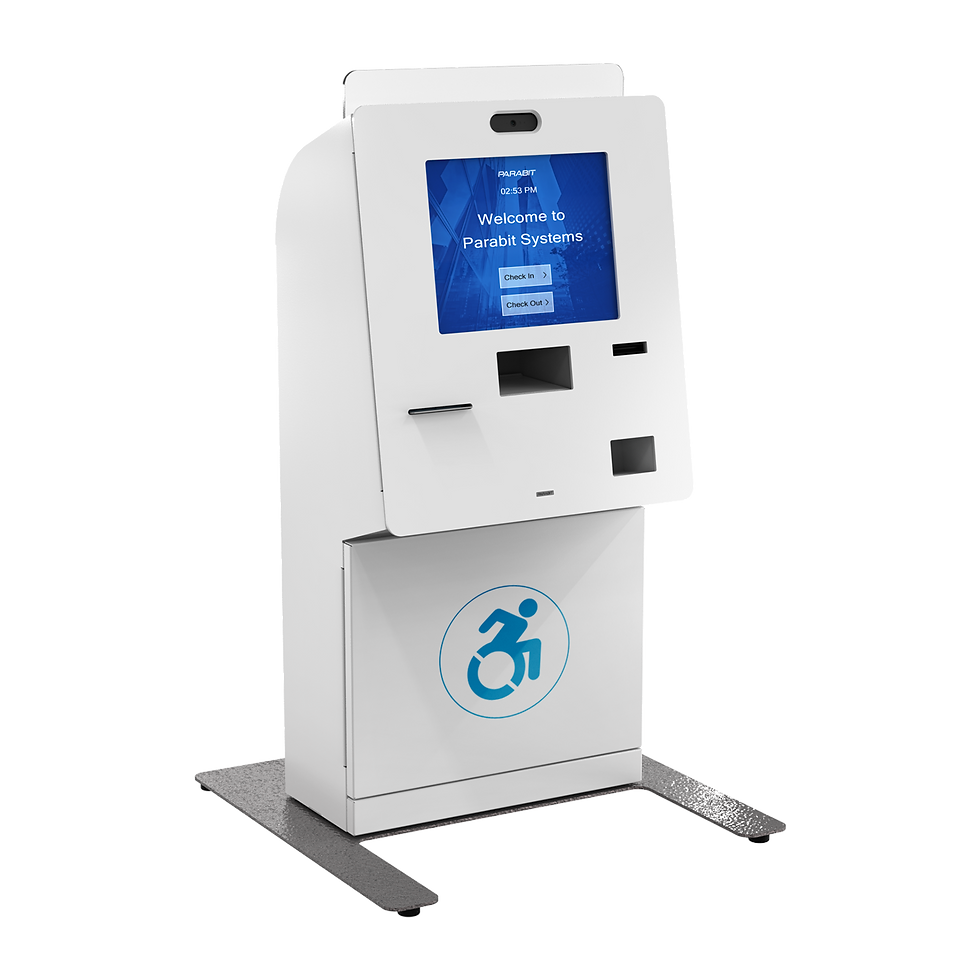Inclusion as the Foundation for Meaningful Engagement
- Parabit

- May 1
- 3 min read

For public spaces to function efficiently and equitably, the design and deployment of technology must go beyond convenience and aesthetics, and as today’s world becomes increasingly interconnected and diverse, true engagement begins with inclusion. When public-facing technology is designed with a wide range of users in mind, it not only supports compliance with accessibility standards but also builds trust, improves service delivery, and enhances the overall user experience.
In airports, hospitals, government facilities, transit systems, and a wide range of other environments, people rely on technology to navigate spaces, access services, and complete important transactions. These interactions must be intuitive and accessible to individuals regardless of language, ability, or familiarity with the system. When design focuses only on the average user, it excludes a significant portion of the population and ultimately limits the effectiveness of the solution. However, when inclusivity is part of the foundation, the result is a system that works better for everyone.
Three critical elements support this kind of inclusive infrastructure: multilingual support, audio prompts, and tactile interfaces. When implemented thoughtfully and cohesively, these features ensure broader access and more meaningful engagement across a wide variety of user groups.
Multilingual support is one of the most effective ways to eliminate communication barriers in public spaces, especially in environments that serve international travelers, multilingual communities, or areas with diverse populations. By providing system interfaces, signage, and support in multiple languages, organizations empower users to complete transactions and access information independently and confidently. True multilingual design does not rely solely on word-for-word translations but considers cultural context, intuitive phrasing, and interface clarity to guide users through each interaction without confusion or hesitation.
Audio prompts enhance clarity and provide essential support for individuals who are blind or have low vision, but their impact extends beyond a single user group. Audio guidance helps older adults, individuals with cognitive impairments, and users who may be unfamiliar with a given system feel more confident and in control. Clear, well-paced voice prompts can walk users through complicated processes, confirm that actions have been completed, and reduce reliance on staff for assistance. In doing so, they make interactions more fluid and inclusive, especially in high-traffic or high-stress environments where confusion can quickly escalate.
Tactile interfaces create a physical path to digital access by incorporating features such as raised keypads, Braille labels, and touch-based feedback. These additions are especially important for users who have difficulty interacting with flat touchscreens, whether due to vision impairments, dexterity challenges, or a need for physical reference points. A well-designed tactile interface makes it possible to complete a task independently, accurately, and securely. When tactile elements are integrated from the earliest stages of product development rather than being treated as retrofits, they offer a seamless and dignified user experience that communicates consideration and respect.
Building inclusive public technology is about making a commitment to serve everyone, and doing so in a way that promotes autonomy, reduces friction, and creates welcoming experiences. People notice when a space anticipates their needs, and they remember when a system made their journey easier rather than more difficult.
The future of public interaction will be shaped by how thoughtfully we design for inclusion today. By embedding multilingual options, audio guidance, and tactile controls into public-facing technology, organizations can ensure that their solutions reach more people, support a broader range of needs, and ultimately foster environments where everyone feels empowered to engage fully.


